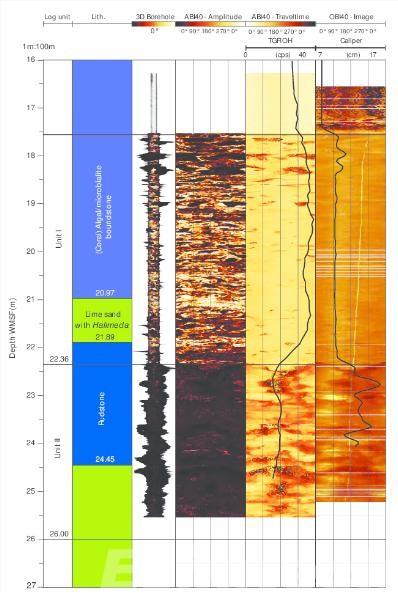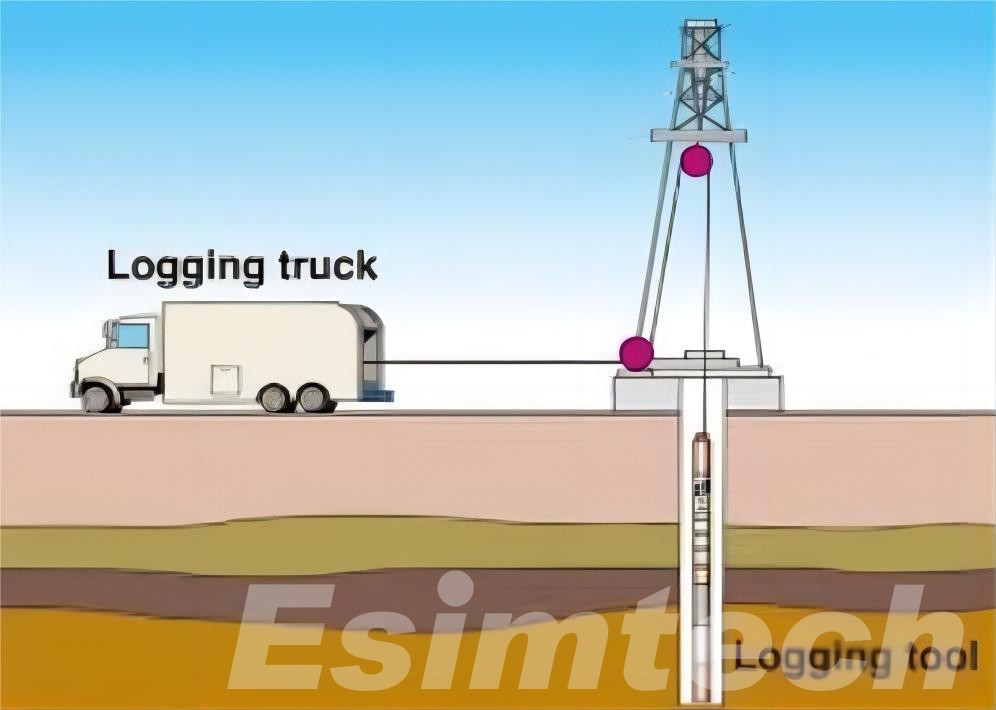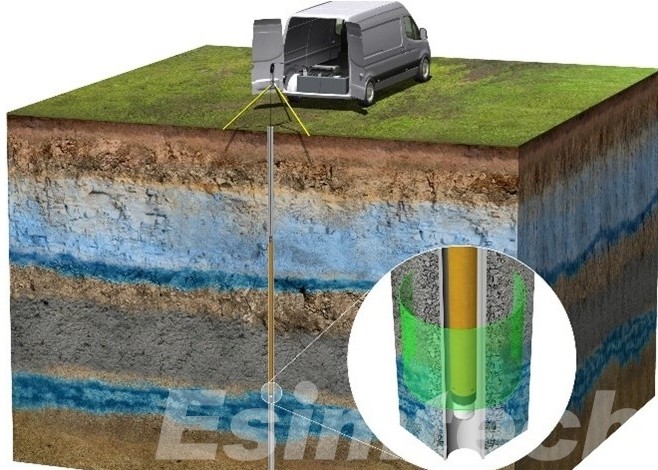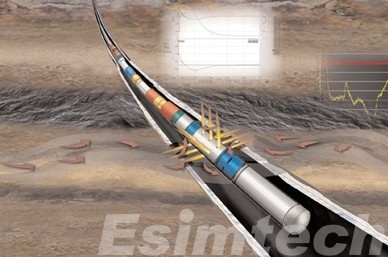Borehole Logging vs. Well Logging: Understanding the Differences
In the quest to understand the Earth’s subsurface, geologists and engineers rely on a variety of techniques. Two crucial methods employed for this purpose are borehole logging and well logging. While the terms might seem interchangeable at first glance, there are distinct differences between them. Let’s delve deeper and explore what sets them apart.
What is Borehole Logging?
Borehole logging, also known as downhole logging, refers to the process of lowering specialized instruments, called logging tools, into a borehole to gather information about the surrounding geological formations. These tools measure various physical properties of the rock, such as natural radioactivity, electrical conductivity, and porosity. The data is collected continuously as the tool is lowered down the borehole, creating a detailed record, or log, of the subsurface characteristics.
Borehole logging can be conducted at any stage of the drilling process. It’s often used during exploration to assess the potential presence of resources like oil, gas, or water. It also plays a vital role in geotechnical investigations, providing crucial data for assessing soil stability and potential hazards.

What is Well Logging?
Well logging, on the other hand, specifically refers to the logging of a well after it has been drilled to its final depth. The primary purpose of well logging is to gather detailed information about the formations encountered throughout the entire wellbore. This information is crucial for various well completion tasks, such as selecting appropriate casing points, evaluating potential production zones, and determining reservoir characteristics.
Similar to borehole logging, well logging utilizes a variety of tools to measure physical properties of the rock formations. However, the focus here is on obtaining a comprehensive picture of the entire wellbore, not just a specific section being drilled.

Key Differences Between Borehole Logging and Well Logging
At first glance, borehole logging and well logging might seem like interchangeable terms. Both involve lowering specialized tools down a hole in the ground to gather information about the surrounding rock formations. However, a closer examination reveals distinct differences in their timing, purpose, and the scope of data they provide.
Timing
- Borehole Logging: This is a dynamic process that unfolds as the drilling progresses. Logging tools are lowered into the borehole while it’s being actively drilled, offering real-time data on the formations encountered. This allows for adjustments to the drilling strategy based on the information gathered. Think of it as a continuous stream of updates from the drilling front.
- Well Logging: This is a static process that takes place only after the well has reached its final depth. The drilling rig is no longer operational, and the logging tools are lowered into the completed wellbore. It’s like a comprehensive post-mission report generated after the drilling journey is complete.
Purpose
- Borehole Logging: This technique primarily serves for exploration and preliminary assessment purposes. The data helps geologists identify potential zones of interest, such as hydrocarbon reservoirs or water-bearing aquifers. It also provides valuable information about the overall geological makeup of the area being drilled. Think of it as scouting ahead, getting a sense of the terrain and potential resources.
- Well Logging: The primary focus of well logging is on evaluating the entire wellbore for completion and production purposes. The comprehensive data set allows engineers to make informed decisions about casing placement, identifying zones suitable for production, and determining the characteristics of potential reservoirs. It’s like analyzing the entire route taken by the wellbore, identifying key points and assessing its suitability for future activities.
Data Scope
- Borehole Logging: The data obtained through borehole logging is specific to the section of the borehole that is currently being drilled. This provides a localized view of the geological formations and their properties. Imagine it as a close-up examination of a specific section of the journey.
- Well Logging: Well logging offers a much broader perspective. The data encompasses the entire depth of the wellbore, providing a detailed record of all the formations encountered from the surface to the bottom. It’s like a panoramic view of the entire drilling path, capturing all the geological features encountered.
Additional Considerations
- Data Acquisition: Borehole logging data is often collected in real-time, allowing for immediate analysis and decision-making. Conversely, well logging data requires retrieval of the tools from the wellbore before analysis can begin.
- Data Complexity: Due to the localized nature of the data, borehole logging data sets might be simpler to interpret initially. Well logging data sets can be more complex due to the larger volume of information and the need to integrate data from various formations.
Here is a sheet summarizing the differences.
| Feature | Borehole Logging | Well Logging |
| Timing | During drilling | After reaching final depth |
| Purpose | Exploration, preliminary assessment | Well completion, production evaluation |
| Data Scope | Localized (current drilling section) | Entire wellbore (surface to bottom) |
| Data Acquisition | Real-time | After tool retrieval |
| Data Complexity | Potentially simpler | More complex (multiple formations) |
When to Use Which Technique?

When venturing into the Earth’s subsurface, borehole logging and well logging offer valuable tools for geologists and engineers, but selecting the appropriate technique depends on the specific project stage and objectives. Here’s a breakdown of when to use each method :
Borehole Logging
This dynamic technique takes center stage during the following scenarios:
- Early-Stage Exploration: When embarking on a new exploration project, borehole logging serves as a crucial scouting tool. As the drilling progresses, logging data is collected in real-time, providing valuable insights into the encountered formations. This allows geologists to identify potential zones of interest, such as hydrocarbon reservoirs or water-bearing aquifers. Imagine it as an ongoing dialogue with the subsurface, revealing potential resources as they are encountered.
- Geotechnical Investigations: For construction projects, understanding the stability and composition of the underlying soil is paramount. Borehole logging plays a vital role in geotechnical investigations. By analyzing the data from logging tools, engineers can assess soil properties like strength, density, and potential presence of hazards like sinkholes. This information is crucial for designing safe and stable foundations for buildings and infrastructure projects.
- Monitoring Wellbore Stability: During drilling, maintaining wellbore stability is crucial. Borehole logging tools can be used to monitor formation pressure, detect potential wellbore collapse zones, and ensure the drilling process proceeds safely and efficiently. It’s like having a real-time health check for the wellbore, identifying potential problems before they escalate.
Well Logging
This comprehensive technique comes into play once the well reaches its final depth:
- Well Completion: After drilling is complete, well logging provides a detailed picture of the entire wellbore. This data is essential for determining the placement of casing, which strengthens and protects the wellbore. Additionally, well logging data helps identify zones suitable for production by analyzing formation characteristics like permeability and porosity. This information is crucial for designing well completion strategies that optimize production.

- Reservoir Characterization: For hydrocarbon exploration wells, well logging data plays a critical role in characterizing potential oil and gas reservoirs. By analyzing the data, engineers can determine the reservoir’s size, porosity, permeability, and fluid content. This information is essential for assessing the well’s potential productivity and designing efficient extraction strategies.
- Wellbore Integrity Evaluation: Over time, wellbores can deteriorate due to factors like corrosion or pressure changes. Well logging can be used to assess the integrity of the wellbore and identify any potential problems. This information helps ensure the safe and efficient operation of the well throughout its lifespan.
In many cases, both borehole logging and well logging are employed throughout a project to gain a comprehensive understanding of the subsurface. The real-time data from borehole logging during drilling provides valuable insights for optimizing wellbore placement and strategy. Subsequently, the detailed data from well logging after reaching final depth allows for informed decisions about well completion and production.
By strategically utilizing both techniques, geologists and engineers can effectively navigate the complexities of the subsurface, leading to successful exploration, well completion, and resource extraction projects.
Conclusion
Borehole logging and well logging are both invaluable tools for geoscientists and engineers working with the subsurface. Understanding the key differences between them allows for the appropriate technique to be selected based on the project stage and goals. By employing these methods effectively, we can gain valuable insights into the Earth’s secrets, leading to advancements in resource exploration, construction planning, and overall understanding of our planet.
